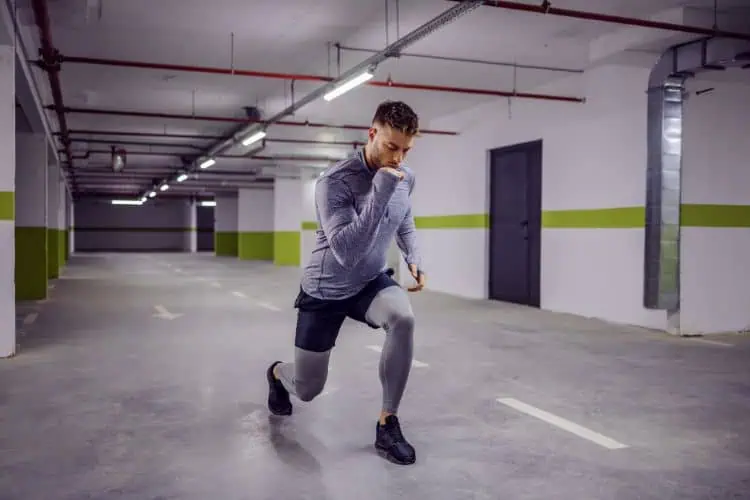

Bodyweight training has gained immense popularity in recent years due to its accessibility, versatility, and effectiveness. Whether you’re a beginner looking to get fit or an experienced athlete seeking to enhance your performance, a well-structured bodyweight training program can help you build strength, increase endurance, and improve flexibility—all without the need for expensive gym equipment.
In this blog post, we’ll guide you through a comprehensive bodyweight training program that targets all major muscle groups and fits seamlessly into your daily routine. This program is designed to provide a full-body workout that can be tailored to different fitness levels, from beginners to advanced exercisers.
What is Bodyweight Training?
Bodyweight training involves exercises that use your body as resistance instead of external weights. These exercises target various muscle groups and can be modified to increase or decrease the intensity. Bodyweight training not only improves strength but also enhances balance, stability, and mobility, making it a functional way to improve overall fitness.
The beauty of bodyweight training lies in its simplicity. You can do it anywhere—whether at home, in a park, or even while traveling. All you need is your own body and a little space to move.
Benefits of a Bodyweight Training Program
1. No Equipment Required
Bodyweight training is accessible to everyone. You don’t need dumbbells, barbells, or machines. Your own body provides enough resistance to build muscle and burn fat. This makes it the perfect option for people who prefer working out at home or don’t have access to a gym.
2. Improved Functional Fitness
Bodyweight exercises mimic natural movements, making them highly functional. Whether it’s squatting down to pick something up, pushing a door open, or climbing stairs, bodyweight training strengthens the muscles used in everyday tasks.
3. Increased Flexibility and Mobility
Many bodyweight exercises, such as lunges and planks, involve dynamic stretching that can improve flexibility and joint mobility. This helps reduce the risk of injury and promotes better movement efficiency.
4. Suitable for All Fitness Levels
Whether you’re just starting out or you’re a seasoned athlete, bodyweight exercises can be modified to suit your fitness level. Beginners can start with basic variations, while advanced exercisers can increase the difficulty by adding more repetitions, sets, or trying advanced versions of the exercises.
5. Full-Body Workouts
Bodyweight training targets all major muscle groups—upper body, lower body, and core—ensuring a balanced and comprehensive workout. By incorporating compound movements, you engage multiple muscle groups at once, increasing calorie burn and building overall strength.
Components of a Successful Bodyweight Training Program
Before diving into the workout plan, let’s break down the key components of a bodyweight training program. For maximum effectiveness, your program should include:
1. Warm-up
Before starting your workout, it’s essential to warm up your muscles and joints. A dynamic warm-up will increase your heart rate, improve circulation, and prepare your body for the workout. This can include exercises like arm circles, leg swings, jumping jacks, and bodyweight squats.
2. Strength Training Bodyweight Training
The core of the program will focus on strength-building exercises such as push-ups, squats, lunges, and planks. These movements target different muscle groups and can be modified to increase difficulty as you progress.
3. Cardiovascular Conditioning
To improve your endurance and cardiovascular fitness, incorporate high-intensity movements like burpees, mountain climbers, or jump squats. These exercises will elevate your heart rate and help you burn calories.
4. Core Training
Strong core muscles are essential for overall stability and balance. Include exercises like planks, bicycle crunches, and Russian twists to engage your core muscles and enhance your posture and functional strength.
5. Cool-down and Stretching
A proper cool-down session is important to relax your muscles and prevent stiffness. Stretching exercises improve flexibility and reduce the risk of injury. Hold each stretch for 15-30 seconds and focus on breathing deeply.
Bodyweight Training Program: Week-by-Week Plan
This 4-week bodyweight training program is designed to progressively increase in intensity, ensuring you continue to challenge your body and make gains. Each week consists of three strength training days, two cardio days, and two rest or active recovery days.
Week 1: Building the Foundation
In the first week, focus on learning the basic movements and developing proper form.
Strength Training (3 Days)
Perform 3 sets of each exercise with 12-15 repetitions. Rest for 30-45 seconds between sets.
- Push-ups (chest, shoulders, triceps)
- Bodyweight squats (quads, glutes)
- Lunges (quads, hamstrings, glutes)
- Plank (core stabilization, 30 seconds)
- Glute bridge (glutes, hamstrings)
Cardio (2 Days)
Choose any form of cardio, such as running, jumping jacks, or cycling, for 20-30 minutes. The goal is to elevate your heart rate and improve endurance.
Rest/Active Recovery (2 Days)
On these days, focus on low-intensity activities like walking, yoga, or stretching to help your muscles recover.
Week 2: Increasing Intensity Bodyweight Training
In the second week, we increase the difficulty by adding more repetitions and including a few new exercises.
Strength Training (3 Days)
Perform 3 sets of each exercise with 15-18 repetitions. Rest for 30 seconds between sets.
- Push-ups (chest, shoulders, triceps)
- Jump squats (quads, glutes)
- Walking lunges (quads, hamstrings, glutes)
- Side plank (core stabilization, 30 seconds on each side)
- Superman (lower back, glutes)
Cardio (2 Days)
Include high-intensity interval training (HIIT) in your cardio sessions. Alternate between 30 seconds of high-intensity exercise (burpees, high knees) and 30 seconds of rest for 20 minutes.
Rest/Active Recovery (2 Days)
Continue with low-intensity activities like yoga, foam rolling, or walking.
Week 3: Challenging Yourself With Bodyweight Training
This week is about pushing your limits and incorporating more challenging movements.
Strength Training (3 Days)
Perform 4 sets of each exercise with 12-15 repetitions. Rest for 30-45 seconds between sets.
- Pike push-ups (shoulders, triceps)
- Bulgarian split squats (quads, glutes)
- Plank to push-up (chest, core)
- Mountain climbers (core, cardio, 30 seconds)
- Single-leg glute bridge (glutes, hamstrings)
Cardio (2 Days)
Continue with HIIT sessions, but increase the duration to 30 seconds of work and 20 seconds of rest. Aim for 25-30 minutes.
Rest/Active Recovery (2 Days)
Take time to stretch and foam roll to prevent muscle stiffness and enhance flexibility.
Week 4: Mastery and Progression Bodyweight Training Program
The final week is about mastering the exercises and pushing for higher repetitions.
Strength Training (3 Days)
Perform 4 sets of each exercise with 15-18 repetitions. Rest for 20-30 seconds between sets.
- Decline push-ups (chest, shoulders)
- Pistol squats (quads, glutes)
- Tuck jumps (quads, glutes, cardio)
- Side plank with leg lift (core, 30 seconds on each side)
- Superman hold (lower back, glutes, 30 seconds)
Cardio (2 Days)
Challenge yourself with a 30-minute HIIT workout, alternating between 40 seconds of high-intensity exercise and 20 seconds of rest.
Rest/Active Recovery (2 Days)
Perform light stretching or yoga. This will enhance flexibility and promote muscle recovery.
Tips for Success in Bodyweight Training Program
1. Consistency is Key
Results from bodyweight training come from consistent effort. Stick to the program and perform your workouts regularly to see improvements in strength, endurance, and overall fitness.
2. Focus on Form
Proper form is crucial to prevent injury and maximize the effectiveness of each exercise. If you’re unsure about how to perform an exercise, consult instructional videos or a fitness professional to guide you.
3. Progress at Your Own Pace
While it’s important to challenge yourself, listen to your body and don’t rush into advanced movements before mastering the basics. As you build strength and confidence, gradually increase the intensity and difficulty of the exercises.
4. Include Variety
Keep your body challenged by varying your exercises. Every few weeks, switch up your routine or add new movements to target different muscles and prevent plateaus.
5. Nutrition Matters
To support your bodyweight training goals, make sure you’re eating a balanced diet rich in protein, healthy fats, and complex carbohydrates. Proper nutrition fuels your workouts and aids in muscle recovery.
A bodyweight training program offers a flexible, accessible, and highly effective way to improve your strength, endurance, and overall fitness. With no equipment required, you can perform these exercises anywhere and at any time. By following this 4-week plan and staying consistent, you’ll be well on your way to achieving your fitness goals while enjoying the convenience of working out at home.
Stay committed, challenge yourself, and embrace the journey to a stronger, healthier you!






Leave a Comment